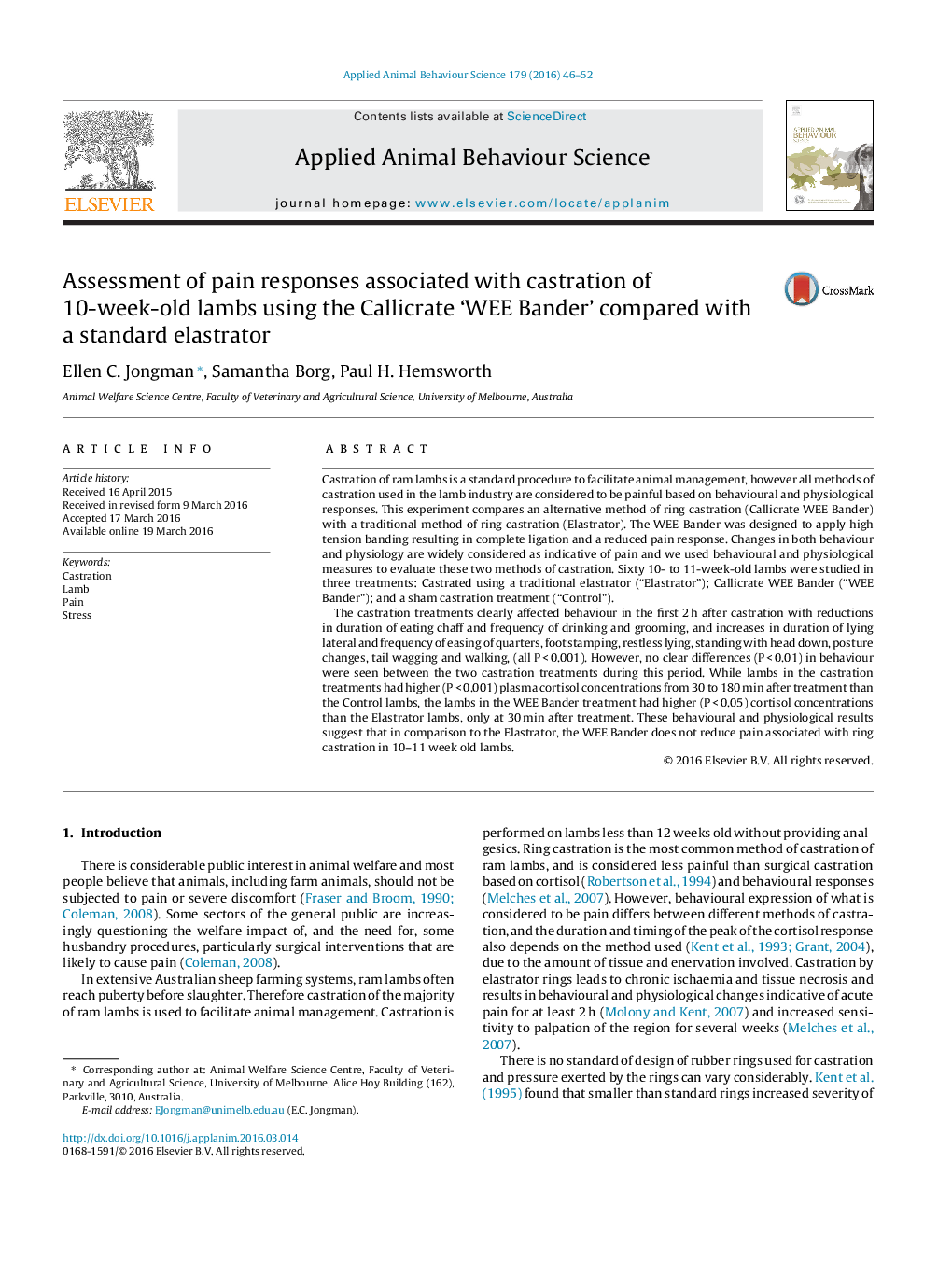| کد مقاله | کد نشریه | سال انتشار | مقاله انگلیسی | نسخه تمام متن |
|---|---|---|---|---|
| 4522371 | 1625327 | 2016 | 7 صفحه PDF | دانلود رایگان |

• We compared a high tension banding method of ring castration with a traditional method.
• We measured both behavioural and physiological pain responses in 60 lambs.
• Both methods of castration were considered painful.
• The high tension banding method does not reduce pain associated with castration.
Castration of ram lambs is a standard procedure to facilitate animal management, however all methods of castration used in the lamb industry are considered to be painful based on behavioural and physiological responses. This experiment compares an alternative method of ring castration (Callicrate WEE Bander) with a traditional method of ring castration (Elastrator). The WEE Bander was designed to apply high tension banding resulting in complete ligation and a reduced pain response. Changes in both behaviour and physiology are widely considered as indicative of pain and we used behavioural and physiological measures to evaluate these two methods of castration. Sixty 10- to 11-week-old lambs were studied in three treatments: Castrated using a traditional elastrator (“Elastrator”); Callicrate WEE Bander (“WEE Bander”); and a sham castration treatment (“Control”).The castration treatments clearly affected behaviour in the first 2 h after castration with reductions in duration of eating chaff and frequency of drinking and grooming, and increases in duration of lying lateral and frequency of easing of quarters, foot stamping, restless lying, standing with head down, posture changes, tail wagging and walking, (all P < 0.001). However, no clear differences (P < 0.01) in behaviour were seen between the two castration treatments during this period. While lambs in the castration treatments had higher (P < 0.001) plasma cortisol concentrations from 30 to 180 min after treatment than the Control lambs, the lambs in the WEE Bander treatment had higher (P < 0.05) cortisol concentrations than the Elastrator lambs, only at 30 min after treatment. These behavioural and physiological results suggest that in comparison to the Elastrator, the WEE Bander does not reduce pain associated with ring castration in 10–11 week old lambs.
Journal: Applied Animal Behaviour Science - Volume 179, June 2016, Pages 46–52